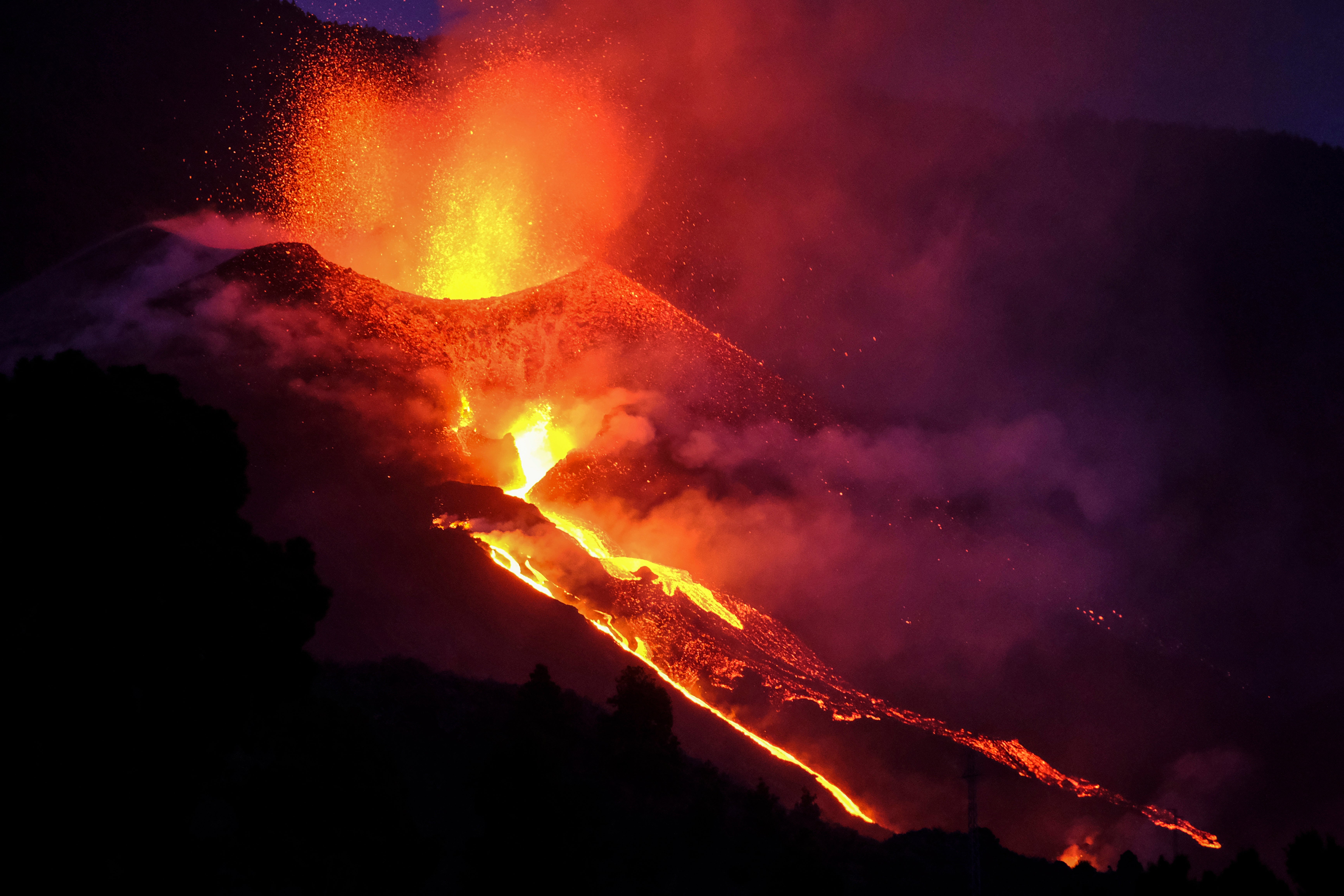La Palma volcano turns ‘much more aggressive’ and blows open new fissures
Two new vents open sending gas and ash nearly four miles into air
Your support helps us to tell the story
From reproductive rights to climate change to Big Tech, The Independent is on the ground when the story is developing. Whether it's investigating the financials of Elon Musk's pro-Trump PAC or producing our latest documentary, 'The A Word', which shines a light on the American women fighting for reproductive rights, we know how important it is to parse out the facts from the messaging.
At such a critical moment in US history, we need reporters on the ground. Your donation allows us to keep sending journalists to speak to both sides of the story.
The Independent is trusted by Americans across the entire political spectrum. And unlike many other quality news outlets, we choose not to lock Americans out of our reporting and analysis with paywalls. We believe quality journalism should be available to everyone, paid for by those who can afford it.
Your support makes all the difference.A volcano which has been erupting on the Spanish island of La Palma for two weeks has blown open two new fissures, sending more molten lava streaming towards the sea, as authorities warned that activity in the area was becoming “much more aggressive”.
The new vents, about 15 metres apart, have sent streaks of fiery red and orange molten rock down toward the sea in a parallel channel to the earlier flow that reached the ocean.
Miguel Angel Morcuende, technical director of the Canary Islands’ emergency volcano response department, said the volcano was “much more aggressive” now that it had been over the previous two weeks of eruptions.
A flow of magma which reached the Atlantic Ocean earlier this week has sent huge plumes of steam and other gases into the air.
Experts say that due to the huge difference in temperatures between the lava (800C, having lost 200C on its journey to the sea) and the ocean (24C), the magma is turning into glass below the surface of the sea.
A new area of solidified lava where the molten rock is flowing into the sea extends over more than 20 hectares.

Particles from the eruption have now reached the Azores, 1,500km away, causing a reduction in visibility, according to the Portuguese Institute of the Sea and Atmosphere (IPMA).
Strong winds have transported particles from the eruption to the Portuguese islands “in the form of sulphate aerosols”, the Portuguese agency said.
Overnight on Saturday, scientists recorded eight new earthquakes up to magnitude 3.5.
The country’s prime minister, Pedro Sanchez, will visit the Canary island on Sunday for the third time since the eruption, with the volcano showing no signs of slowing.
The eruption has sent gas and ash up to 6,000 metres into the air, officials said, and around 1,000 soldiers are working on the ground.
Officials are monitoring air quality along the shoreline but sulphur dioxide levels in the area do not represent a health threat, La Palma’s government said.
However, it advised local residents to stay indoors. It also recommended that people on the island wear face coverings and eye protection against heavy falls of volcanic ash.
The volcano has so far emitted some 80 million cubic metres of molten rock, scientists estimate – more than double the amount in the island's last eruption, in 1971.
The lava has so far destroyed or partially destroyed more than 1,000 buildings, including homes and farming infrastructure.
Additional reporting by AP
Join our commenting forum
Join thought-provoking conversations, follow other Independent readers and see their replies
Comments